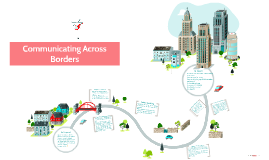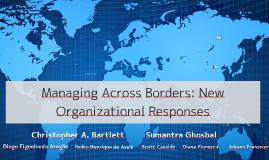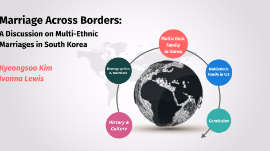Marriage Across Borders
Transcript: Marriage Across Borders: A Discussion on Multi-Ethnic Marriages in South Korea Kyeongsoo Kim Ivanna Lewis History & Culture History & Culture Historical Background Historical Background U.S. military bases stationed in South Korea (U.S. involvement with WWII, Korean War) Men couldn't find brides locally In 1990s, women of southeast asia (Japanese, Vietnam, Philippines … ) started to Korea for finding better life condition Agricultural population decreases rapidly in 1970. Acceptance? Acceptance? Korean women who married American soldier -> "Yanggongju" (Yankee Princess) Marriages with foreigner were forbidden Families and children resulted from the marriages were rejected Yanggongju Cultural Implications Cultural Implications Koreans believed in "Danil Minjok" (One People) First introduced by the Japanese during colonial rule Shin Chae-ho Re-established following the Korean War to promote nationalism in the country http://tour.djjunggu.go.kr/html/en/culture/culture_0306.html Demographics & Numbers Demographics & Numbers 52.4% of Koreans say Korea is getting multi-cultural society 28.2% says Korea is already multi-cultural society (2017, by trendmonitor) ONENESS "One People" Statistics By ISSP (International Society of Sustainability Professionals) The ratio of interracial marriages in which the groom was the foreigner: 1990: 87% 2004: 28 % 2009: 24.5% Gender Ratio of international marraiage By Korea National Statistical Office (NSO) Number of foreign spouses living in Korea 2001 : 11,605 2009 : 33,300 2012 : 28,326 In the last three years, 10% of marriages in South Korea were international (Especially South East Asian: 30,000) Which side of the border? By Korea National Statistical Office (NSO) Multi-Ethnic Families in South Korea Multiethnic Family in Korea Majority of current multi-ethnic family in Korea lives in rural area In 2000s ,development of international marriage brokers business, south east Asian women get married with Korean leads in interparental conflicts LifeStyle The Struggle for Multiethnic Families in Korea Huge Age Gap (at least 10 to 30) language barrier (30%) Cultural difference(18%) Child Education (11%) Foreign brides think their struggles come from language barrier Statistics By Korea Institute for Health and Social Affairs (2017) Difficulties Divorce Rate Many of them ended up getting divorced by Korean National Statistical Office (NSO), 2014 Majority of foreign wife from east-asian country is having trouble communication in Korea => It is neccessary for foreigners to learn Korean to live and work in Korea !!! Fact Check Foreigners who can successfully work and stay in Korea are usually American Native who works as an English teacher or soldiers in U.S Army. They don't stay in Korea for a long term and are not the main population who build multiethnic family in Korea Fact Check Education Gap Child Education Problem Education Gap Replacement for Korean native students living to City Most of child from multi ethnic family get educated in small town with inferior educational infrastructure. Child from multi ethnic family studying in Rural Area Total Amount of Student in Rural Area Racism Racially intolerant or just unaware? Racism White over Black? White over Black? By Trendmonitor, 2017 76.2 % of multi-ethnic families feel Korea has racism ( in 2017, By trendmonitor ) 82.2 % says Koreans' attitude toward foreigners depend on their Countries(ethnicities) => Westernized Beauty Standard Half Black on Media Han Hyun Min Yoon MiRae Michelle Lee Half-Black Koreans started to speak up in media and make huge influence in Korean Society Progress Korean people's awareness of multi ethnic culture is changing positively! Not necessarily racism, Historical background(Oneness) Korea needs more time to accept multi ethnic culture ! Because of Hanryu, multi-ethnic family in Korea has more diversity (South and north America, Europe) + They speak korean and understand korean culture well K-pop, K-drama Study aborad, youtube, tourism... Progress Progress Increasing Cultural diversity Beneficial to the low birth rate trend in South Korea Condition : Government should support multh-ethnic family institutionally Possitive Effect Advantage South Korea has the lowest birth rate 1.17 births per woman (2016) by google statistics Multi-Ethnic Families in the U.S.A. Multiethnic Family in U.S "Melting Pot" -> easily accepted? Populated Cities (LA, NY) Common 1970s, 1 percent of children were of mixed race. Now it is 10 percent ! Looking up melting pot Raised American or Korean? Identities crisis Does divorce play a role? Korean Communities? Church? School? Different kind of identity crisis Identities crisis Accessibility Conclusion Different Factors: History, Culture, accessibility Future of multi-ethnic marriages Racial Awareness/Tolerance? Conclusion Works Cited Works Cited Thank You! Hope You Enjoyed Our Presentation

















